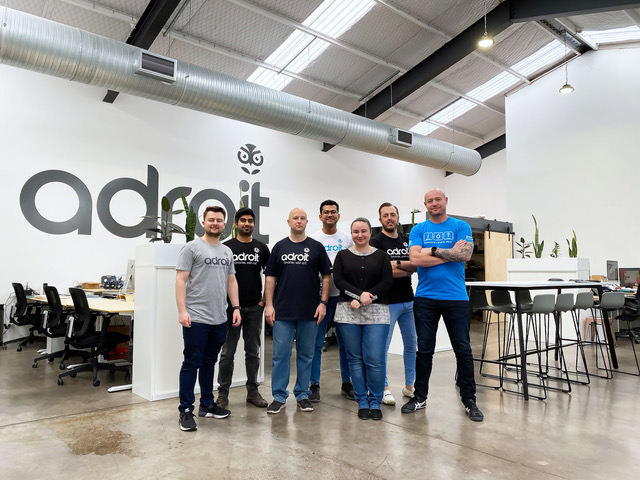How Healthy is your Workplace?
With the pandemic constantly drawing our attention to the health of our workplace, we’re more aware of the cleanliness of our surfaces, physical spacing of our workers and most importantly, the air that we breathe, than ever before.
Despite that, few businesses monitor the air quality of their offices. And when Adroit started our collaboration with international sensor equipment provider Libellium, we took the opportunity to monitor our own workplace and were shocked at the result.

Our team at Adroit in our new office premises on Mackelvie Street, Grey Lynn, Auckland.
“We couldn’t work out why most of us were feeling tired in the afternoon, and the place felt so stuffy,” says Adroit founder Ulrich Frerk. We didn’t really understand how serious it was,” he said.
“We found that levels of CO2 were getting up to around 1,600 parts per million in the afternoons, and one day, it peaked at 1660, which is very, very high. At that level it can definitely cause drowsiness and sleepiness, or potentially cause serious health effects as well!”
Adroit’s offices are a picture of modern tech business. A 1920s shoe factory converted into a clean white space, with high ceilings and polished concrete floor. It has plenty of space for the team to work in peace, collaborate in teams, or meet over the table tennis table.
But what our team couldn’t see was that the aging air-conditioning system lacked an all-important fresh air intake, so they were exposed to potentially harmful air pollutants throughout the day.
We installed a Libellium data logger with a range of sensors equipment, measuring CO2, carbon monoxide, particle matter, nitric dioxide, and ozone gasses – all components of indoor air quality standards (IAQ). We were measuring them on a 15-minute interval, so we were able to graph what was happening to the air over the timeline of the day.

Adroit founder, Ulrich Frerk.
“In the morning, we were generally fine – we started the day with CO2 at around 500 parts per million, but it got progressively worse as the day went on. As a tenant, your assumption is that the air conditioning is vented to the outside world, that it’s got good filters that get cleaned and maintained, but the data pointed to a massive issue with building ventilation,” Ulrich said.“
We rang our landlord and the people that manage the properties, and said; ‘Guys, this is getting too high’. They came to replace it with a brand new air conditioning unit and identified that we actually didn’t have any ventilation in that part of the building whatsoever!”

Adroit collaborates with international sensor equipment provider, Libellium.
So, did the introduction of a fresh air vent improve the situation?
“Yeah, it’s significantly different. The average we’re now getting inside of our building is around 400 to 600 parts per million throughout the day. That’s well below the New Zealand standard of a thousand parts a million -anything more is considered seriously unhealthy.”
“The place doesn’t feel stuffy at all. There’s definitely more achievement in the afternoon. People aren’t sitting at their desks with their droopy eyes and complaining that they’re feeling tired and that they need more coffee…“
In fact, I think the coffee use has now dropped as well,” he said. Click here to read more about Smart Air Monitoring Solutions.
